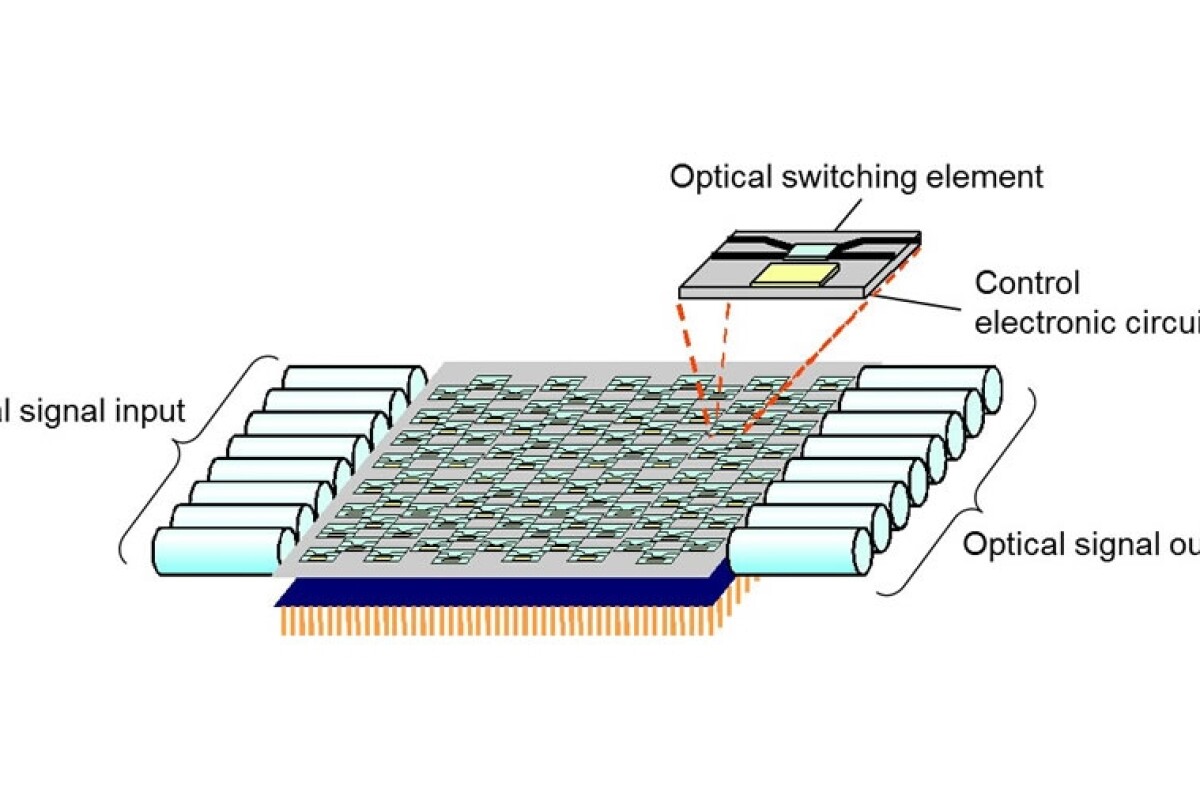Fujitsu Laboratories has unveiled a new optical switch technology that it claims uses half the power of conventional optical switches. The new optical waveguide switch uses photonics made from silicon germanium (SiGe) instead of pure-silicon semiconductor material. This technology will be the basis for a new generation of high-speed optical switches capable of operating across a wide range of wavelengths, while featuring perhaps the world’s lowest power requirements.

As the volume of network data continues to rise, so does the power required to run those networks. According to the “Green IT Initiative” report by the Japan Ministry of Economy, Trade, and Industry (December 2007), the amount of electricity consumed by networking equipment in 2025 is predicted to be 13 times greater than in 2006 if no energy-saving measures are taken. Fujitsu sees SiGe photonics as a way to carry more data while using less power, providing a greener solution for optical network infrastructure.
Optical networks can carry a huge amount of data efficiently. Before the development of optical switching, network paths had to be converted from light to electricity and back to light again during processing. Optical switching requires no conversion of the light signal during processing, saving energy and increasing efficiency.
A waveguide optical switch uses an array of optical switching elements to connect the paths of optical signals, and switch between them. Each optical switching element features a refractive-index modulator and electronic controls. Applying an electrical current to the modulator causes electrons to accumulate in waveguides that modulate the refractive index and switch the output port.

Because optical switches use the same silicon semiconductor technology found in other types of electronics, both optical and electronic elements can be arrayed on the same strata and are relatively cheap to manufacture. The key difference in Fujitsu’s new optical switching element is that it uses fine-patterned SiGe in the refractive-index modulator, instead of pure silicon. Fine-patterned SiGe has a narrower band-gap than pure silicon, and so allows for more efficient electron accumulation (and requires less power for switching).
Conventional pure-silicon optical switching elements need about 3 mW of power to achieve electron accumulation. Fujitsu says its SiGe optical switching elements require only 1.5 mW to operate, making them the least power-hungry high-speed elements in the world. Because they use less power SiGe photonics also generate less heat, which can damage equipment over time.

Fujitsu so far has developed optical switch device prototypes using the new SiGe technology and says it plans to proceed with integration efforts to develop large-scale optical switches to enable the next-generation of optical networks.
Fujitsu Laboratories is presenting details of this technology at PHO 2010 -- the 23rd Annual Meeting of the IEEE Photonics Society – in Denver, Colorado, from November 7-11.







